Table of Contents
When it comes to Portuguese pastries and cakes, most people have heard of the pastel de nata (or Portuguese custard tart as it’s often called outside of Portugal).
It’s probably the best Portuguese cake, but it’s far from the only one. There are hundreds of different Portuguese cakes and pastries, and that’s before you take into account regional variations. I’ve tried lots of them (hence all the photos) and I’m here to share some of my favourites.
The following is a list of just some of the different cakes and pastries that you’ll find in Portugal. It’s by no means exhaustive so, if you have any recommendations for cakes that have been missed, leave a comment below.
My top recommendations
The following, not necessarily in order, are some of my favourite cakes in Portugal. You won’t find them all everywhere as some are regional, but it will give you some suggestions for what to look out for.
- Queijada Dona Amélia
- Pastel de Nata
- Travesseiro de Sintra
- Broa de mel (the Northern Portuguese version)
- Pirâmide De Chocolate
- Pastel De Santa Clara
- Queijo De Figo
- Eclair (from Porto)
Pastel de nata

These days, most people have not only heard of a pastel de nata, but actually tried one. It’s one of Portugal’s most famous cakes and, not only will you find them in just about every pastelaria in Portugal, but you’ll also find them in many bakeries around the the world as well.
From experience, the pastéis de nata I’ve found outside of Portugal are generally nowhere near as good as the ones you’ll find in Portugal. I don’t know if it’s to do with different types of ovens, or just people being unfamiliar with how they should taste, butmost non-Portuguese bakeries just cannot make them properly. If you want to experience the authentic thing, you have to come to Portugal.
Then there’s the difference in quality between bakeries in Portugal. Although apastel de nata from any Portuguese café taste great, there’s a big difference between a bog standardpastel de nata and one from a specialist bakery like Pastéis de Belém or Manteigaria in Lisbon.
I’m always on the lookout for the best in pastéis de nata in Lisbon or wherever I’m visiting in Portugal. If you find anywhere you think is great, be sure to let others know by leaving a comment.
Queijada da Dona Amélia
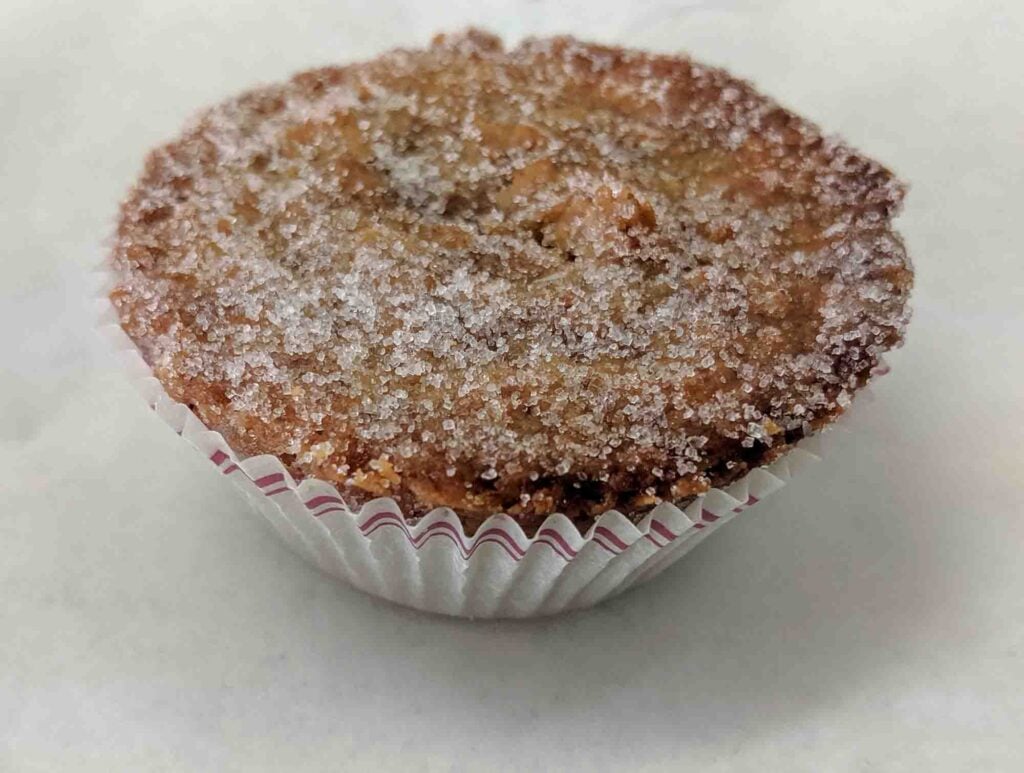
Originally known as “Indianos” or “Bolo das Índias” due to its ingredients from the Orient, the cake underwent a regal rebranding after Queen Amélia’s visit in 1901. Made with a delightful mix of honey, cinnamon, corn flour, raisins, and molasses, and topped with confectioner’s sugar, this dense yet soft pastry sometimes draws parallels with gingerbread for its mixture of spices.
Angra do Heroísmo, a UNESCO World Heritage city on Terceira, played a significant role during the Age of Discoveries, and it’s here that the Queijada further entrenched its reputation. While this delicacy is available in most cafés on the island, for those seeking an authentic taste, a visit to pastelaria ‘O Forno’ in downtown Angra comes highly recommended. The confluence of rich history and unique flavour makes the Queijada da Dona Amélia a must-try for anyone venturing to the Azores.
Pirâmide de chocolate

A pirâmide de chocolate is a pyramid-shaped cake that’s made from recycled* cake (whichever cake was about to go stale), then covered in chocolate, and topped with cream and a cherry.
Recycled cake sounds a little unappetising, although this is quite common in other countries. Ireland has Gur cake, for example. Some people say it’s not made from recycled cake, but just from the trimmings of other cakes.
And it’s definitely not unappetising at all. It tastes very similar to salame (see below) so, if you like that, you’ll probably like this too. It may even be better than salame, so it’s definitely worth trying.
Pão de deus
Pão de Deus is a little bread roll that are covered in coconut,doce de ovos, and sugar. It’s fairly savoury, as Portuguese cakes go, and is often eaten for breakfast or as part of a snack. Some people use them for sandwiches, filling them with butter, cheese, or ham.
These are pretty common all over Portugal, and you’ll see them in the bakery section of most Portuguese supermarkets as well.
On November 1st, All Saint’s Day, it’s typical in some regions for grandparents to give these to their children in a tradition known as Pão-por-Deus.
Pastel de Santa Clara
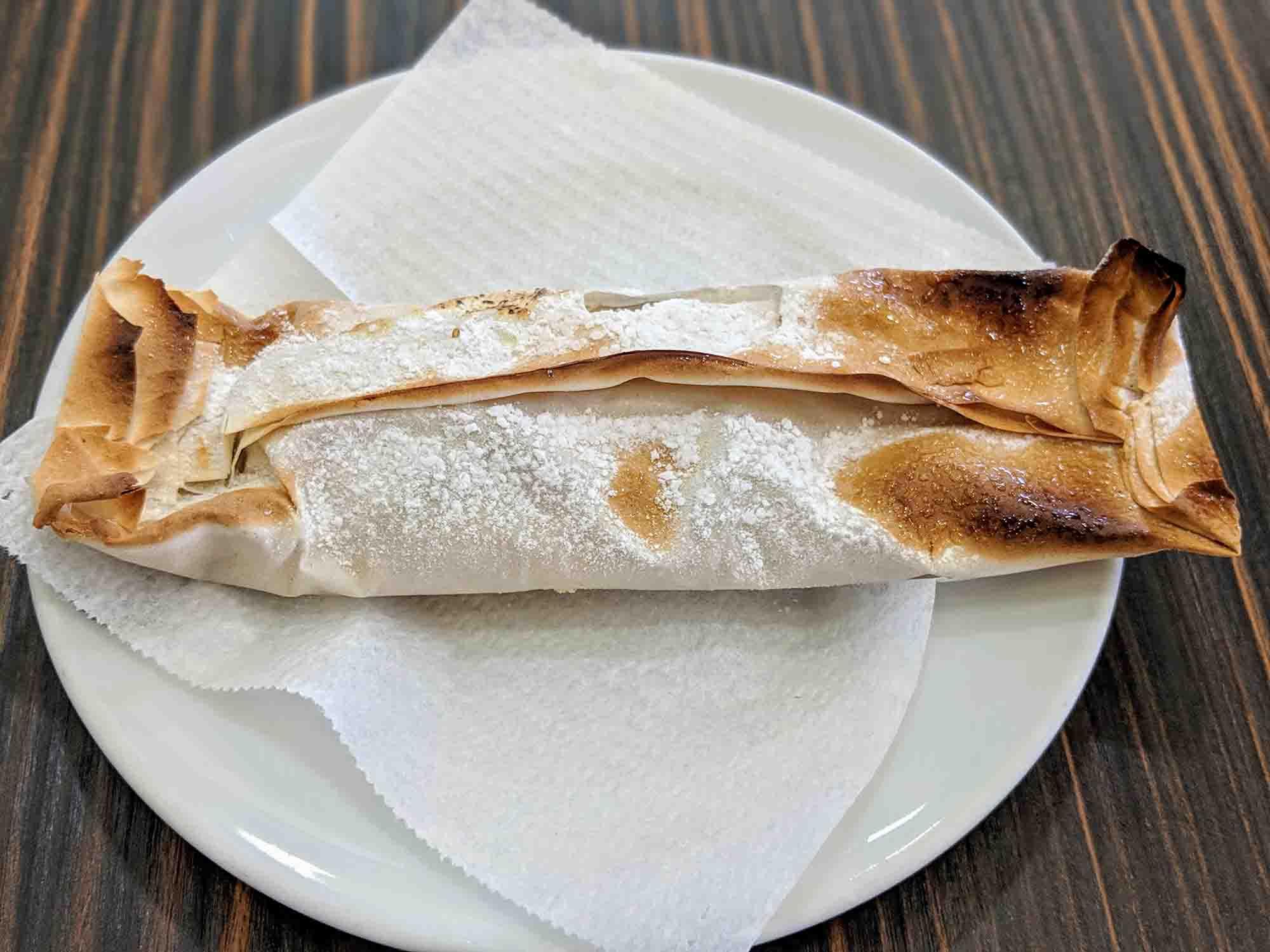
The Pastel de Santa Clara is very similar to the Travesseiro de Sintra (see below) both in design and taste, but better. It’s more delicate, more flavoursome, and more beautiful.
Pastel de feijão
Pastéis de feijão are small tarts with a white bean filling that are usually dusted with icing sugar.
They’re typical in theTorres Vedras region of Portugal just above Lisbon, although they’re a common sites sight in pastelarias up and down the country. The bean filling suggests that they should be savoury, but they’re actually very sweet.
Bolo de arroz
A Bolo de Arroz is a muffin-shaped cake that’s made from rice flour. They’re almost savoury, which is quite rare amongst Portuguese cakes as most are extremely sweet.
If you don’t have a very sweet tooth, or you’re not in the mood for something sickly, this is a great cake to order.
The Bolo de Arroz is a pretty common cake in Portugal, and you’ll see it almost as much as the pastel de nata. You’ll also find it outside of Portugal, particularly in Brazil, Mozambique, and Angola.
Bola de Berlim

A Bola de Berlim is a berliner doughnut with a twist: Berliners usually have jam as a filling but the Bola de Berlim uses yellow Portuguese custard (doce de ovos) instead.
Like the Bolo de Arroz, you’ll find these at most pastelarias in Portugal. You’ll also find Portuguese people eating them at the beach, and you’ll sometimes even see vendors going up and down the beach selling them.
Having a Bola de Berlim on the beach is very traditional in Portugal so, if you see somebody selling them, be sure to order one.
Salame

Salame is a chocolate salami; a cake made from broken maria biscuits and chocolate.
You’ll actually find chocolate salami all over Europe: in Greece (called aMosaiko), in Lithuania (called aTinginys), in Russia (calledshokoladnaya kalbasa) and in Italy (called salame di cioccolato).
This is another sweet that you’ll find all over Portugal, and not just in cafés either. Most supermarkets will have them in the premade cake section, and you’ll also see single slice servings in vending machines next to the cans of Coca Cola.
Queijada
AQueijada is a small Portuguese cake made from eggs, sheep’s cheese or Requeijão (curd cheese), milk, and sugar.
There are many different regional takes on the queijada, including theQueijada de Sintra and theQueijada de Evora. You’ll also find queijadas inMadeira, Oeiras, andPereira.
Queijo de Figo

Queijo de Figo is a cake that’s essentially just made from figs and crushed almonds that are pressed together. There’s a little more to it than that: sugar and cinnamon is also added, along with lemon zest, fennel, chocolate powder and sometimes other ingredients like medronho, but it’s a very simple dessert.
Aside from the added sugar, it’s pretty healthy and almost completely natural. It doesn’t contain any flour and, importantly for vegans, it’s one of the few Portuguese sweets that doesn’t contain any eggs.
This type of cake is typical in the Algarve, and you’ll find it sold there at the fruit and vegetable markets.
Guardanapos

Guardanapo means napkin or serviette and that’s exactly what these cakes look like.
They’re essentially a square piece of Portuguese sponge cake, which is much softer than and more pliable than sponge cake in other countries. Portuguese custard is spread onto one side of the Guardanapo before it’s folded over – just like a serviette.
Torta de Cenoura/noz/chocolate

A torta is similar to a swiss roll. It’s a piece of sponge that’s been spread with a filling, and then rolled up.
You’ll find several different types of torta in Portugal including cenoura (carrot), noz (nuts), and chocolate (chocolate).
Palmier

You’ll find Palmiers for sale in pastelarias throughout Portugal, and even in your local Portuguese Lidl. They’re made from puff pastry that’s coated in sugar and then rolled up into a heart shape.
Although the name sounds French, some Portuguese people believe that’s where the French connection ends and that they are in fact Portuguese.
Palmiers aren’t very sweet and have a very buttery flavour to them. They’re perfect for enjoying with a big milky coffee first thing in the morning.
Pastel de Laranja
Sweet, sticky, and tasting like marmalade, pastéis de laranja make use of the many oranges that Portugal grows, particularly in the Algarve.
Travesseiros de Sintra

A travesseiros is a pillow-shaped pastry made from puff pastry that’s filled with an egg and almond cream and then sprinkled with sugar. Although they’re sold throughout Portugal, many believe that you cannot get a good one outside of Sintra.
If you’re visiting Sintra it’s worth doing as the Portuguese do and making a special pilgrimage to Casa Piriquita, a pastelaria in the heart of Sintra.
Mil Folhas
A Mil Folha is amille-feuille, although in England and Scotland it’s often just called a vanilla slice or a custard slice. This is definitely a French cake, although it’s quite common throughout Portugal and also in Brazil.
InBragança and in Porto, you’ll find regional takes on the mil folha that you’re unlikely to find anywhere else.
Queque
A queque is a crown-shaped Portuguese-style muffin made from dough, yeast, and fat.
It’s pronounced like the English word for cake, and these can be found in pastelarias all over Portugal. Like the Bolo de Arroz, they’re fairly savoury and are a good option if you’re not looking for something overly sweet.
Tigelada
Tigelada is made from eggs, milk, sugar, and cinnamon and then baked in a terracotta bowl. It looks a bit like a crème brûlée, especially when it’s in the bowl, but it’s probably more similar to a giant pastel de nata without the pastry crust.
Torta de Azeitão
ATorta de Azeitão is a Swiss Roll-style cake that’s typical in Portugal’sSetúbal region. As with many Portuguese cakes, the filling is made from doce de ovos.
Bolo Xadrez
Made up of different squares of cake and then covered in chocolate, the Bolo Xadrez is a common feature in pastelarias all over Portugal.
Ovos Moles
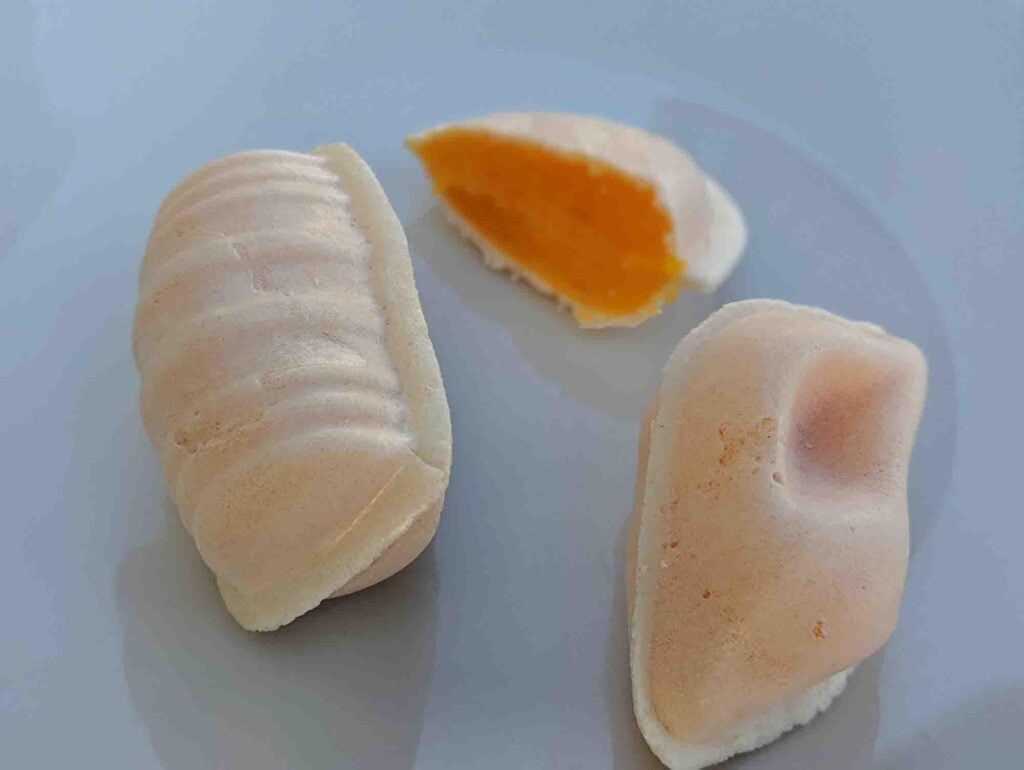
Ovos Moles de Aveiro is a Portuguese delicacy that originates fromAveiro, although you’ll find these in most Portuguese pastelarias. As of 2006, Ovos Moles are the first Portuguese sweet to receive the Protected Geographical Indication certificate.
The outside is made from a wafer-thin pastry, while the inside is filled with a thick, and very sweet, egg yolk filling.
Bolinhos de Coco
Bolinhos de Coco are small cakes made from desiccated coconut, eggs, sugar, and lemon zest. You’ll find them in pastelarais and, because they’re so easy to make, people often make them at home as well.
Folhado de Maçã
A folhado de maçã is basically an apple turnover. Sometimes they come with chopped nuts on the side.
As well as folhados de maçã, you’ll also find several other apple-based pastries and cakes including delícia de maçã and tarte de maçã.
Jesuíta
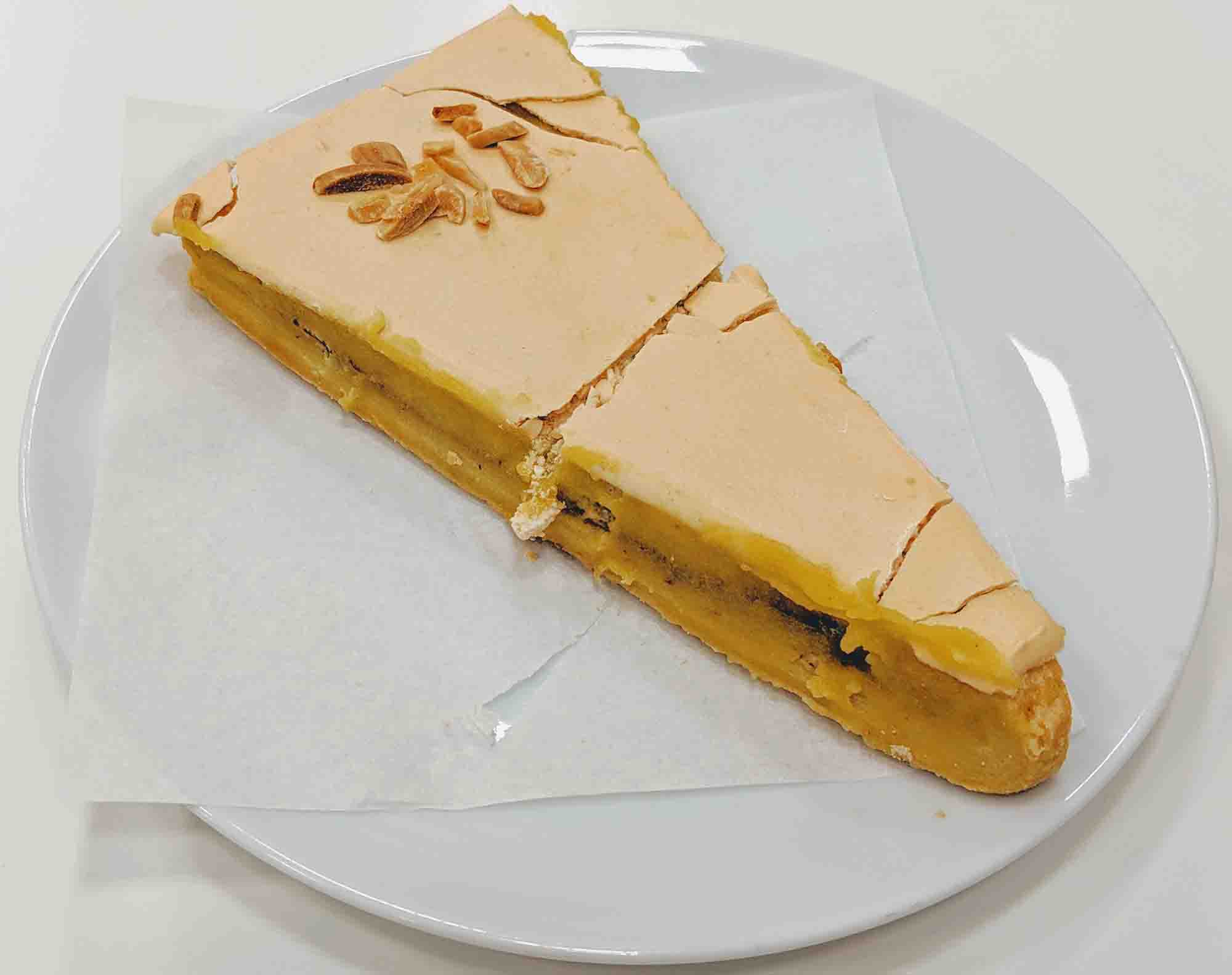
Found in pastelarias all over the country, these pastries are believed to have originated inSanto Tirso nearGuimarães. They’re usually covered in a sugar glaze, although there are numerous variations. The only thing that stays constant is its triangular shape, which some say is based on a Jesuit cloak.
Fatiamaçã/noz/cenoura/amendoa
Fatia simply means slice. Fatia noz means a slice of nut cake while fatia cenoura means slice of carrot cake. It’s not exactly the most descriptive name in the world, and it doesn’t tell you a lot about what the cake is made of, but it’s pretty common to see this on pastelaria menus.
Bolo Rei (and Bolo Rainha)
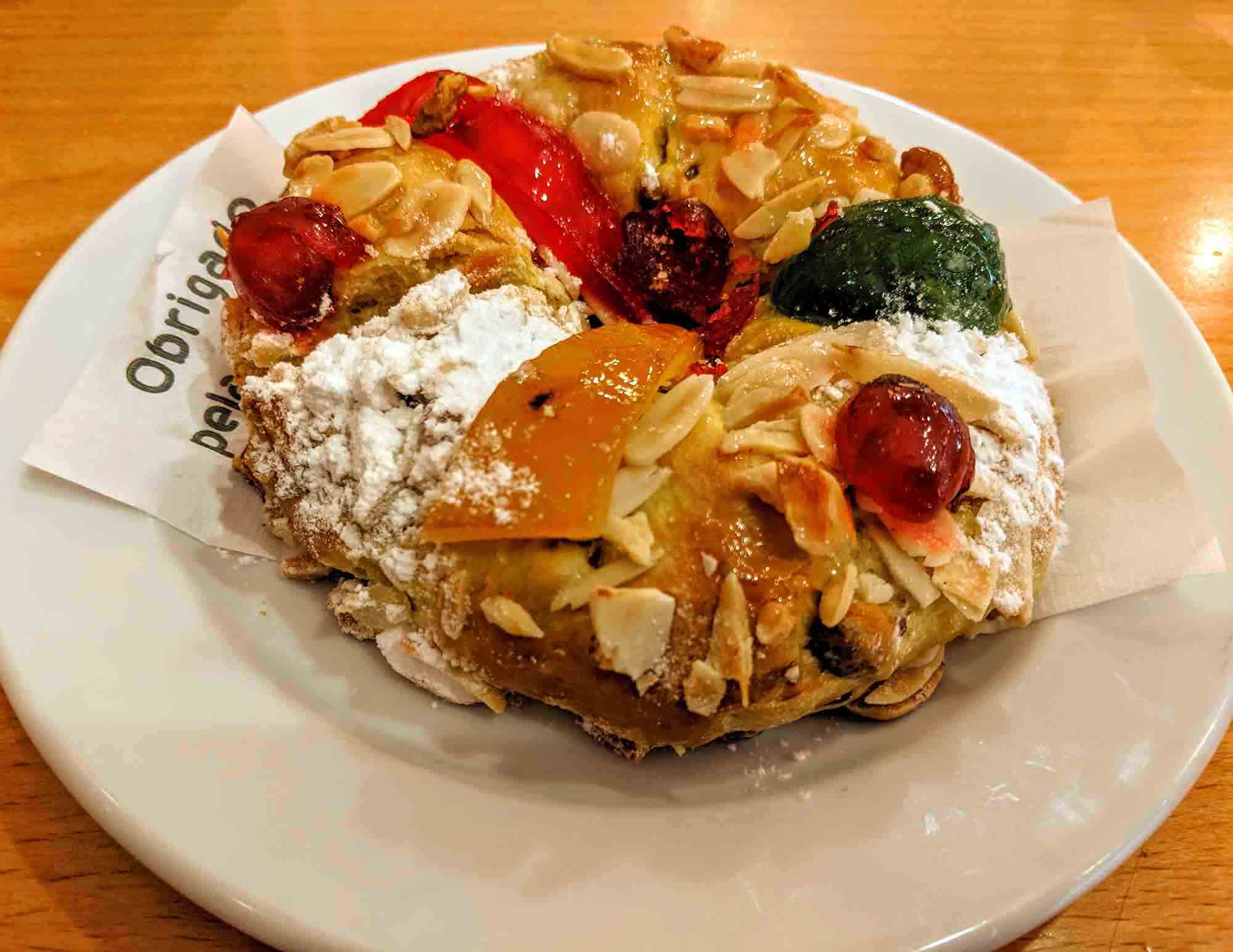
Bolo rei (king cake) and bolo rainha (queen cake) are two of the most popular Christmas cakes and, although you can get them throughout the year, you’ll really see a lot more of them in the run up toChristmas.Bolo rei has sugared fruit on the top, whileBolo Rainha is more nuts-focused.
Although you’ll see them everywhere throughout December, they are traditionally eaten in the days between Christmas and Epiphany (6th of January).

Confeitaria Nacional, a bakery in Lisbon, is credited with introducing this cake into Portuguese culture in 1870. Although just about every other bakery in Portugal now makes one, as well as most Portuguese supermarkets, many Lisboetas believe that this is still the only place to buy one.
Éclair
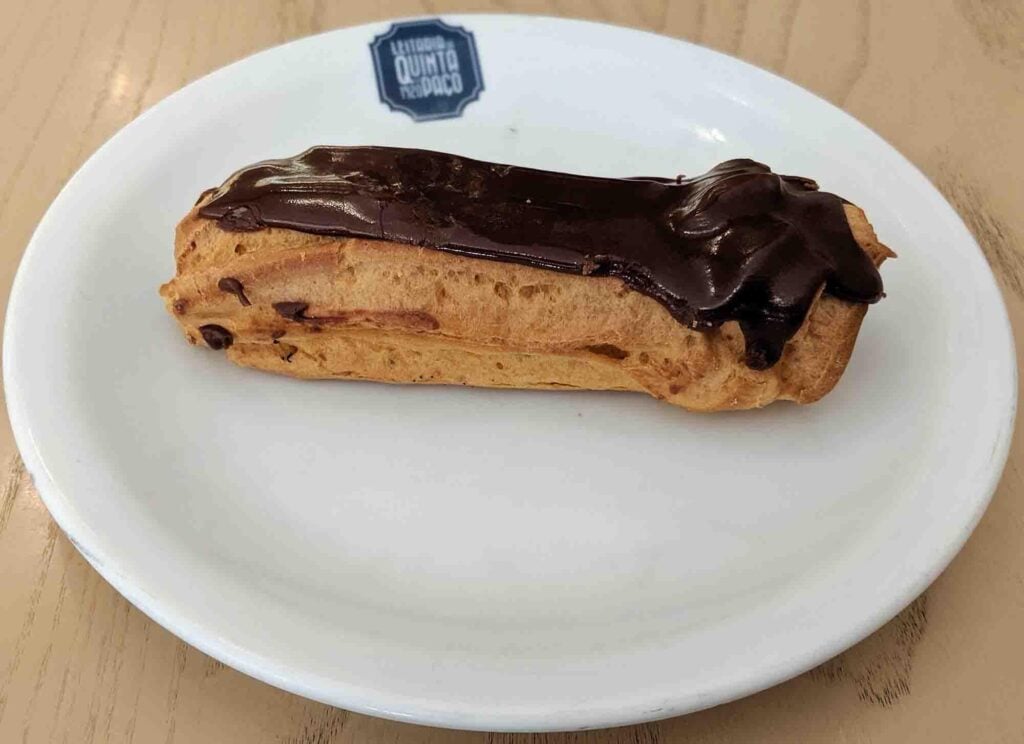
Identical to a French éclair in shape, but different on the inside. In Porto, whipped cream is used and in some pastelarias you’ll find eclairs with doce de ovos.
Fatia Dourada
A fatia dourada (or rabanada) is like a cold slice of French toast, and that’s pretty much what this is. It’s a lot sweeter and a lot more sugary than French toast, so you’ll need a strong black coffee to wash it down.
This doesn’t need to be served cold although, if you see it in the pastelaria counter, that’s probably how it’ll be served. If served warm, it’s usually served with a wine syrup on top.
Sonhos
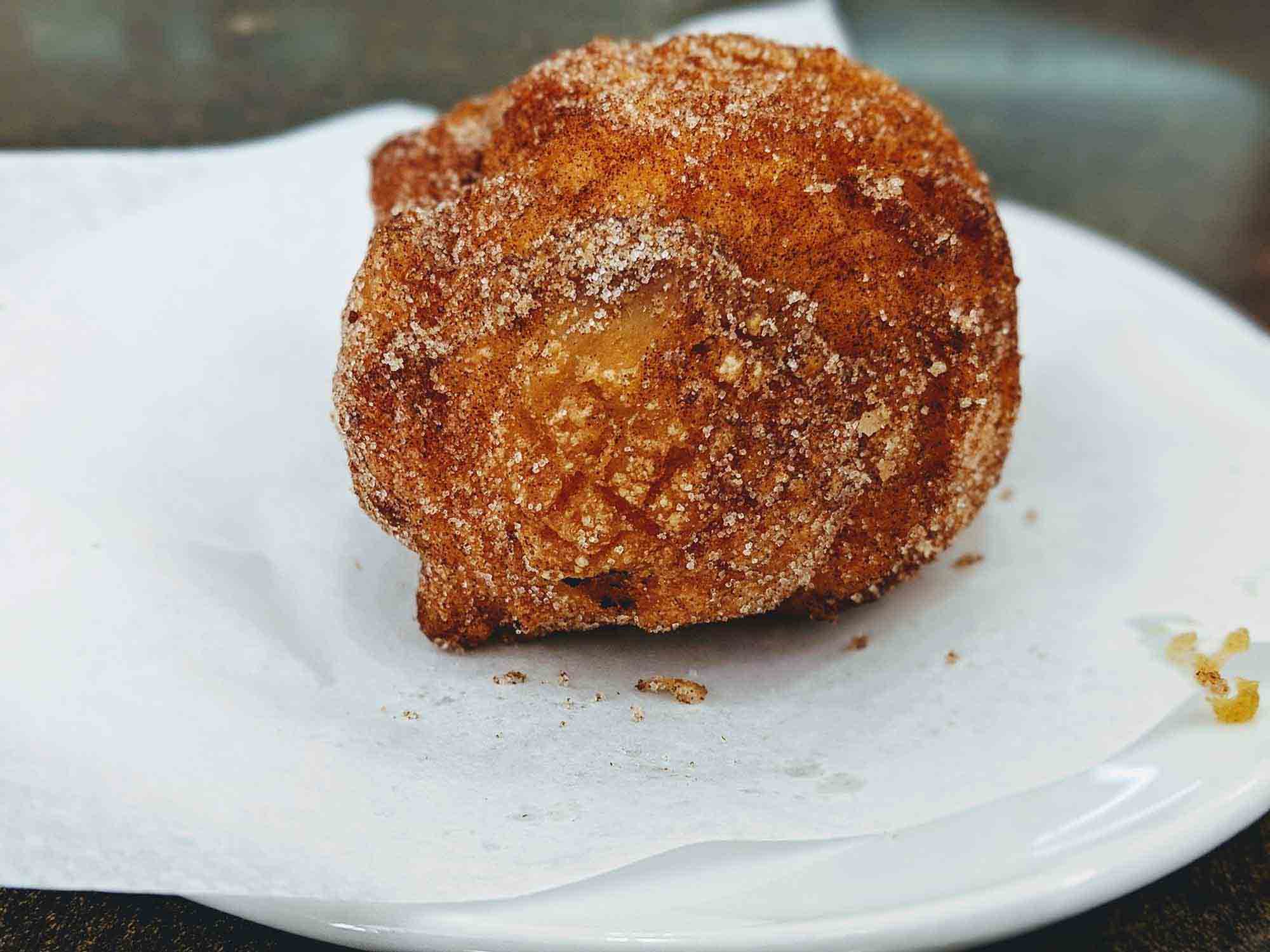
Sonhos (sometimes calledsonhos de natal) are a type of Portuguese doughnut: they’re round balls of dough made from flour, butter, eggs, sugar, and cinnamon that are fried and then coated in sugar.
Sonhos are quite a Christmasy cake, and so you’ll only really see them in Portugal in Autumn and in the months leading up to Christmas.
Pata de Veado
Another Swiss roll-style cake, thePata de Veado is recognisable by the strange wedge-shape that it’s usually cut into.
It contains doce de ovos for the inner filling and this is often found on the outside, along with desiccated coconut.

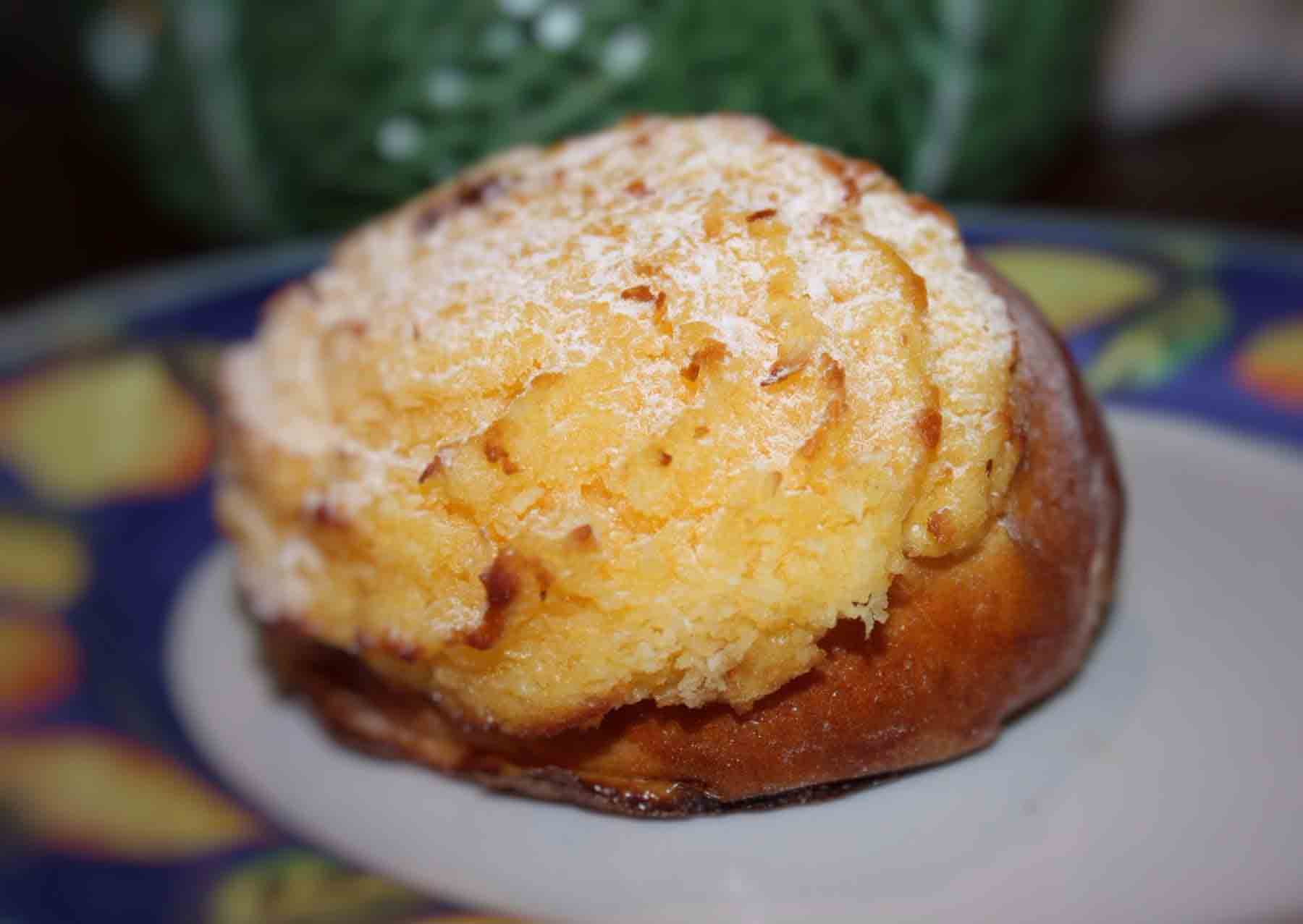



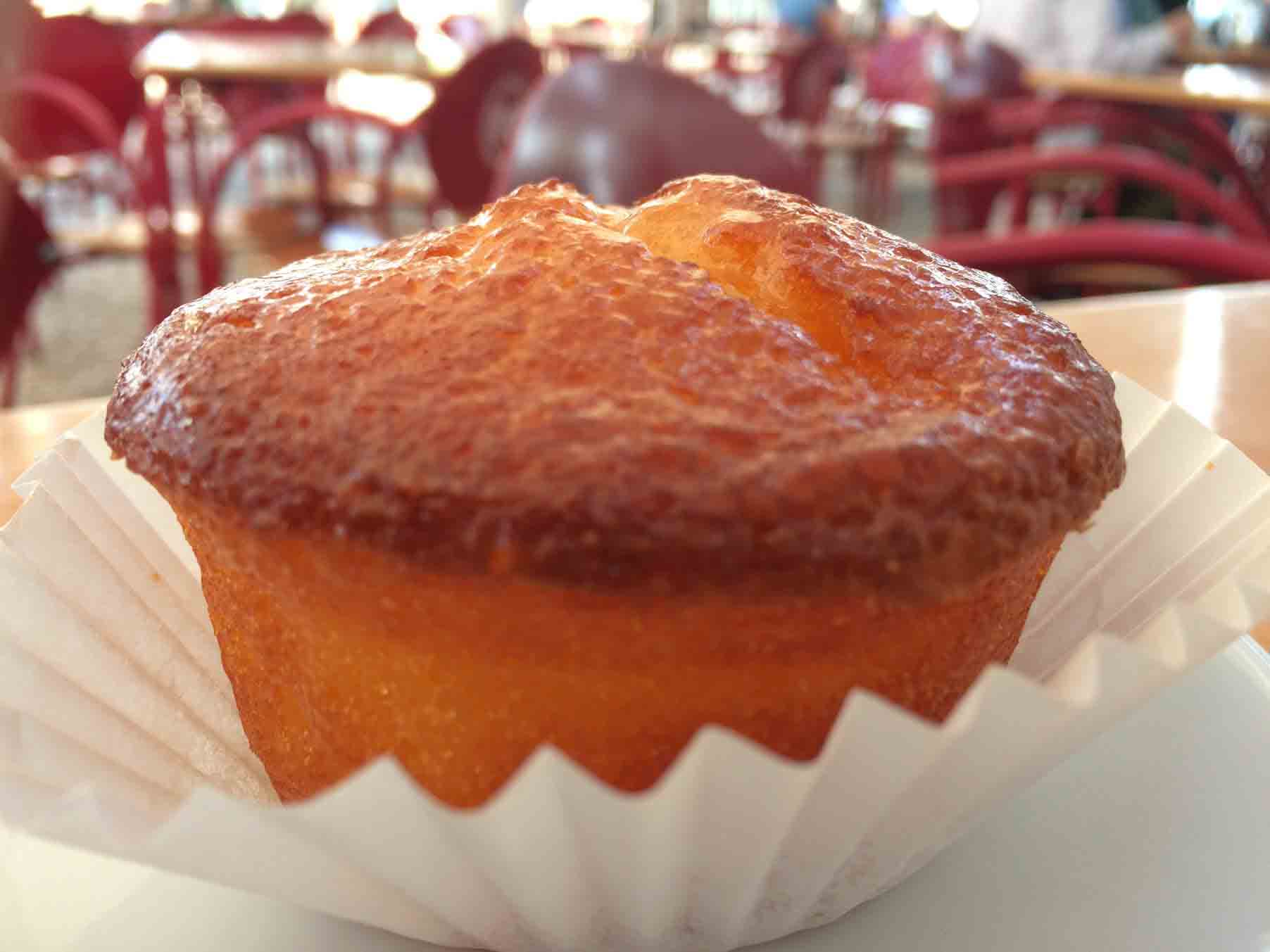





Comments are closed.